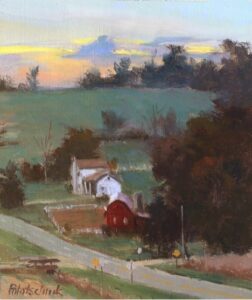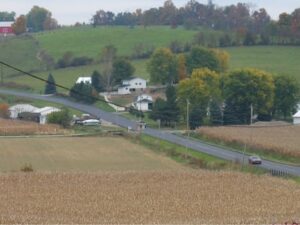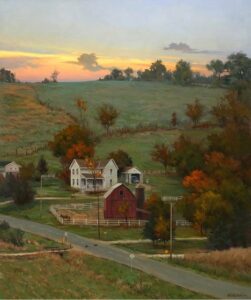 I don’t think as artists that we give much thought to all the studies that have been done on the subject of “Creativity”…we just create. The people who supposedly study these things usually speak of creativity’s five steps.
I don’t think as artists that we give much thought to all the studies that have been done on the subject of “Creativity”…we just create. The people who supposedly study these things usually speak of creativity’s five steps.
The five steps of creativity
1 – Preparation:
All the years of immersion in art provides a foundation, a body of knowledge, that is accessed when beginning to create. This stage may also include additional research.
2 – Incubation:
Ideas, possibilities, and concepts are mulled over, analyzed, and evaluated.
3 – Illumination:
An idea, an acceptable concept forms and begins to jell. Some call it the ah-ha moment.
4 – Evaluation:
Critical analysis of the ah-ha moment…the solidified concept. Are there any possible problems? How can they be resolved?
5 – Implementation:
What’s an idea worth if not implemented. Implementation is the hard work, the 99% perspiration as Einstein once said. This is the place of frustration, self-doubt and discouragement. It’s also the place where persistence is rewarded with a great sense of accomplishment and satisfaction.
 For the painting shown below, I can certainly see the application of all five steps. For me, and I imagine for many artists, the steps are not often separate and distinct; there is a lot of back-and-forth overlapping of them.
For the painting shown below, I can certainly see the application of all five steps. For me, and I imagine for many artists, the steps are not often separate and distinct; there is a lot of back-and-forth overlapping of them.
Some artists have said they always have a very clear vision of where they’re going with a painting before they even begin. That has never worked for me. My paintings tend to be ever evolving, right up to the end. For this painting, “The Calm Descends”, the photo reference was first evaluated, which is nice it itself, but then the question was asked, “What can be done to help communicate more clearly how this scene makes me feel?” Many of the answers to that question were either subconscious or instinctive. Words that come to mind concerning the photo are: calm, peaceful, quiet, safe, agricultural, down to earth working folks, farming, family, community, and changing seasons. With these feelings, I went searching for an appropriate “sky” from my picture files… one that felt right. In landscape painting, the sky determines everything in the painting.
With photo reference in hand and using the basic composition of the photo above, work began on the study shown below. Significant changes were made to the house and barn, creating the feeling of a small family farm in a somewhat more intimate setting. Changing the mood, time of day, structures, and coloration of the photo required a coordinated application of imagination with the concept that had started to jell in the Illumination Stage. Here, I just wanted to see how everything would work together.
It’s one thing to do small studies in order to work out ideas, it’s another ball game entirely when working that study up into a much larger work, as seen in the final painting below.

Comparing the final work with the study, it’s easy to understand what I spoke of earlier…the continual back-and-forth overlapping of the five creative steps. Significant changes were made to all the structures, all created from imagination. A small garage was added to the right of the farm house. The father is backing out the car as his daughter waits eagerly before they set off to the store. Mom is sweeping the porch as her son rides his bike on the driveway. Horses in the corral watch with interest as two small dogs make their way across the quiet county road as the day draws to a close. The overall coloration of the scene was warmed and considerable time was given to achieving a variety of textures within the grasses and distant fields.
With these additions and changes, the small farm has become very livable, inviting, calm and peaceful, a place of safety and joy for this young family. These are all qualities that are often found in my paintings…paintings with a subtle narrative…created with a concept in mind, yet brought to life through the imagination and a lot of hard work.
Pototschnik’s work and weekly blog may be accessed at www.pototschnik.com
Suellen Grove McCrary says
Great information and I love the finished painting! Great composition and feeling – makes me want just enter this scene!
john pototschnik says
I appreciate that, Suellen. Thank you.